
| What is Flavor and Fortune? |
| How do I subscribe? |
| How do I get past issues? |
| How do I advertise? |
| How do I contact the editor? |
Read 13119937 times
Connect me to:
| Home |
| Articles |
| Book reviews |
| Letters to the Editor |
| Newmans News and Notes |
| Recipes |
| Restaurant reviews |
| Article Index (all years, slow) |
| List of Article Years |
| Article Index (2026) |
| Article Index (last 2 years) |
| Things others say |
| Related Links |
| Log In... |
| Authors |
| Categories & Topics |
Litchis, Longans, and Loquats
| by Jacqueline M. Newman |
Fruits, Desserts, and Other Sweet Foods
Spring Volume: 2008 Issue: 15(1) page(s): 26, 27, 28,31, 32, and 33
These three fruits may look alike to some, but they never taste alike. They can be mixed and matched in cooking even though confused in reality; that, and they do have different tastes. Below, we sort them out to help folks learn enough of their differences so they can enjoy them even more than they already do.
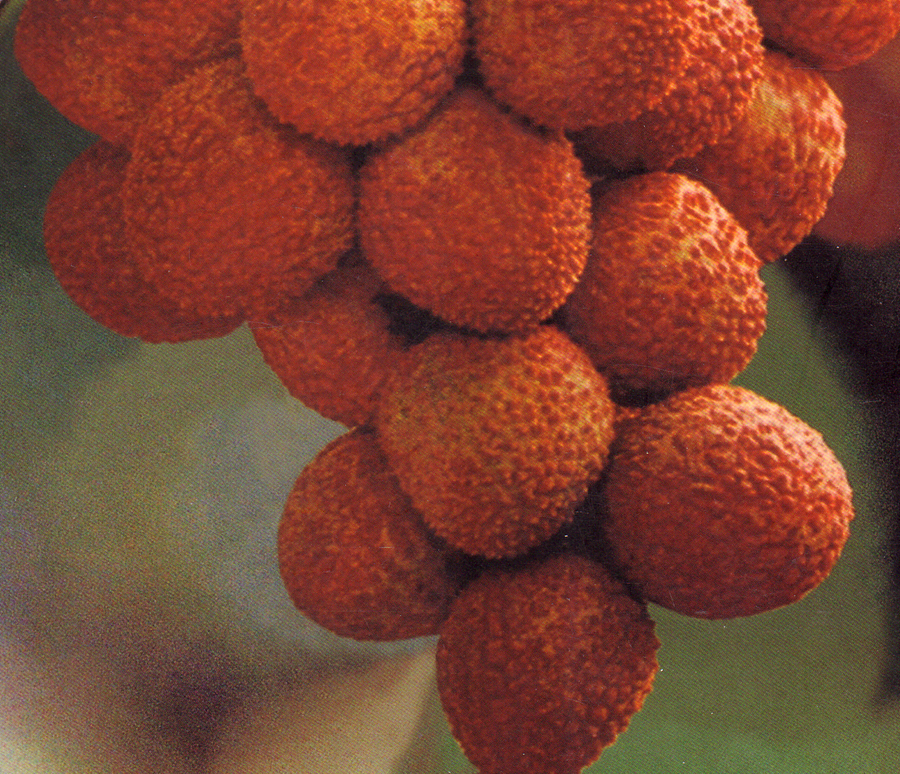
 Litchis: This fruit originated in tropical China two thousand or more years ago. Called the 'King of Fruits.' The 'Queen of fruits' or Mangosteen was reviewed in Volume 12(2) on pages 9, 10, and 32. The litchi was discussed a long time ago in Volume 4(1) on pages 5, 6, and 22. It is time to update readers on this great fruit that at one time only grew on huge evergreen trees. Now it is found on smaller trees, commonly grafted there.
Litchis: This fruit originated in tropical China two thousand or more years ago. Called the 'King of Fruits.' The 'Queen of fruits' or Mangosteen was reviewed in Volume 12(2) on pages 9, 10, and 32. The litchi was discussed a long time ago in Volume 4(1) on pages 5, 6, and 22. It is time to update readers on this great fruit that at one time only grew on huge evergreen trees. Now it is found on smaller trees, commonly grafted there.
Botanically known as Nephelium litchi and Litchi chinensis, each fruit begins as an inconspicuous flower that can be male, female, or hermaphroditic. It matures and is round or slightly oval, very aromatic, and with a reddish to greenish scaly wart-like skin. The litchi, sometimes spelled lychee, is very white and very juicy when ripe. The fruit is borne in clusters as can be seen in the bunch of them on this page. It is related to the hairy rambutan which botanically is the Nepheloium lapaceum. It will be featured with other fruits in the next and in future issues. Some say the fruit if the litchi tree does taste similar to that of the rambutan. However, more folk will say the litchi is better and sweeter.
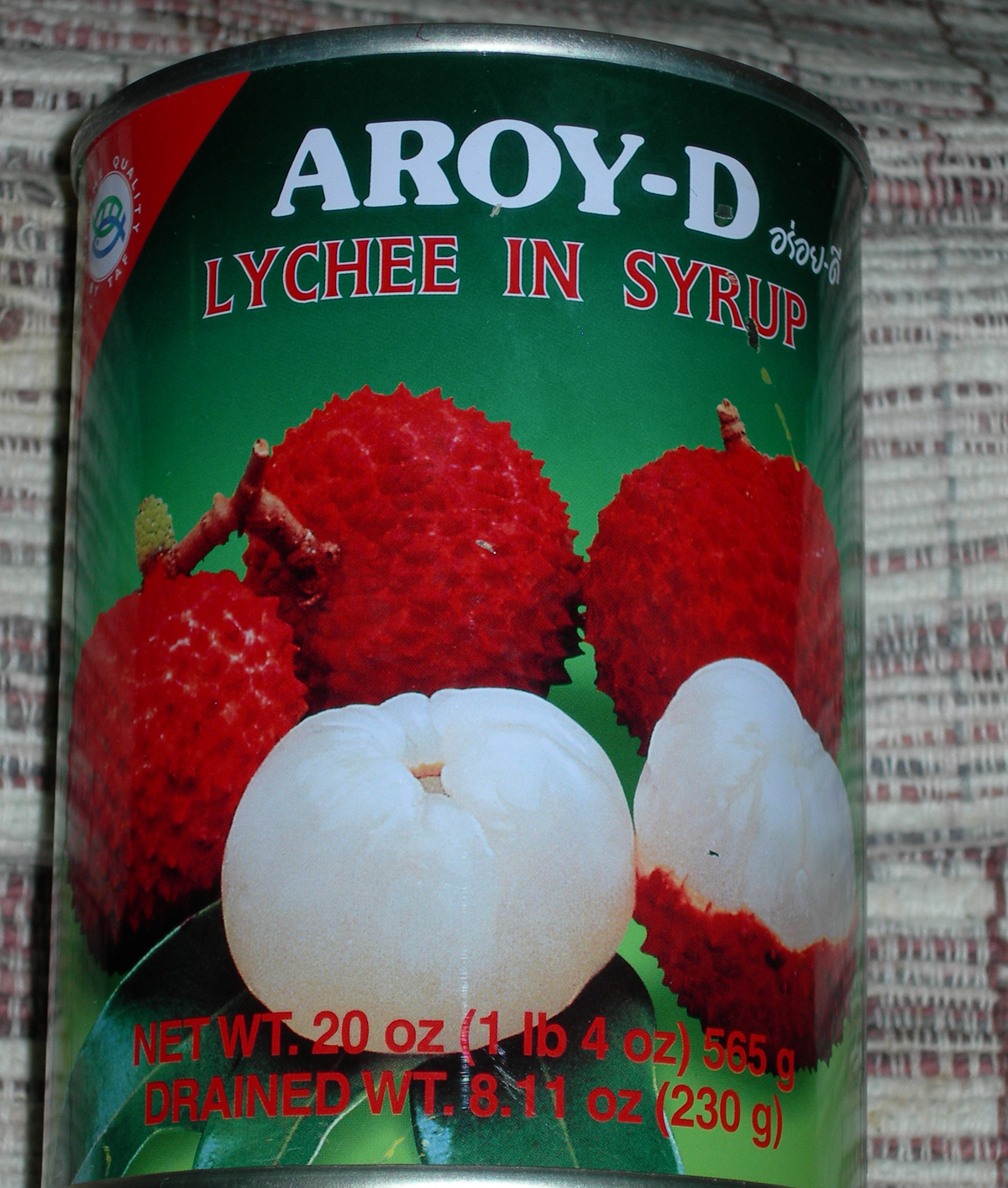 Those going to this magazine's web site will note and need to know that this magazine did spell the name of this fruit in a way more common to its past than its present. Like the size of the trees, its spelling is changing, but not on all canned products. What has not changed is how it is known in Chinese. To the Chinese, it remains a li zhi. Spelling and tree size aside, another change is fruit availability and that there are newer varieties. The latter has made it possible to enjoy fresh litchis during a longer season. Other than enjoying them fresh, the litchi is available canned, dried, as juice, and as a liquor.
Those going to this magazine's web site will note and need to know that this magazine did spell the name of this fruit in a way more common to its past than its present. Like the size of the trees, its spelling is changing, but not on all canned products. What has not changed is how it is known in Chinese. To the Chinese, it remains a li zhi. Spelling and tree size aside, another change is fruit availability and that there are newer varieties. The latter has made it possible to enjoy fresh litchis during a longer season. Other than enjoying them fresh, the litchi is available canned, dried, as juice, and as a liquor.
Chinese consider the litchi a delicacy; they adore them any and every way. They cook them fresh and/or dried, put them in meat and fish dishes, and in stuffings, and they cook them and/or serve them raw with other summer and winter fruits. They also use litchi flowers to scent their teas. Litchi tea is the second most popular scented tea; jasmine is the most popular one.
Sub-tropical, commercial, and commonly planted in orchards, some litchi fruits do grow wild, including many on Hainan Island. These ancient fruits were reported 'delicious' during Han Dynasty times (206 BCE - 220 CE). They were touted in the 4th century, to be 'big as hen's eggs' and later in the Tang Dynasty (618 to 907 CE), a poet referred to the fruit as 'precious as pearls.'
So important was the litchi, that they were a tribute food, sent north by horseback to the court. One empress, Yang Kufei, wanted them often and her husband obliged. However, how they came might be an oft-repeated tale. Why, because litchis do not travel well. Such a trip would require several days and the fruit would not arrive at peak quality. Even if it is a tale, it is an important story because it shows the respect given to this fruit.
For centuries, afficionados have touted litchis grown in or near Guangdong as the very best. Some years back, we were treated to a visit in a lichi garden in Shenzhen, some miles south of Guangdong. It was a summer day when we could indulge and eat these fruits to our hearts content. There, and in many other places, litchi orchards are called litchi gardens, and we surely enjoyed this special opportunity as sons of the owner were sent climbing into the trees to hand down the very best. Beautifully red and loaded with juice, the boys were seeking fruit with small seeds. However, they were not too successful even though their farmer-father kept telling them to get fruit on this branch or the other. We cared not and just ate and ate them enjoying every minute of the experience.
Two hours later with over-filled stomachs, they sent us back to our hotel with a half-bushel of this luscious fruit. We packed them into our tiny hotel-room refrigerator, ate more after dinner, some during the night, and still others before and at breakfast. We continued to devour them at all meals for two days more. We agreed with and almost practiced what Dongpo Su, a poet living during the Tang dynasty said, and that was: Every day savor three hundred litchis and you will not regret living in the south of China. We would not mind living there throughout every litchi season.
We had heard that litchis with small seeds are considered best; and now know seed size can be and is bred into many of the newer shorter trees. We also now know that litchis with red skin are not the only great ones. Science, grafting, and general know-how have made many more of the two hundred litchi varieties popular. They have helped forty varieties grown commercially in the Guangdong province to become even better than those great litchis we recall with fondness.
These newer and better litchis are available for all to enjoy thanks to the Pomology Research Institute of the Guangdong Academy of Agricultural sciences, the Central China and South China Agricultural Universities, and other experts in the field. They have advanced techniques including artificial pollinating litchis so we all can enjoy lots more and better litchi fruit than ever before.
They who have developed newer species, extended the season, and probably doubled it. They have developed Sanyuehong and other varieties so that they ripen early, have done likewise with Magili, which ripens among the last. They have even made a litchi green on the outside ripe, juicy, and delicious.
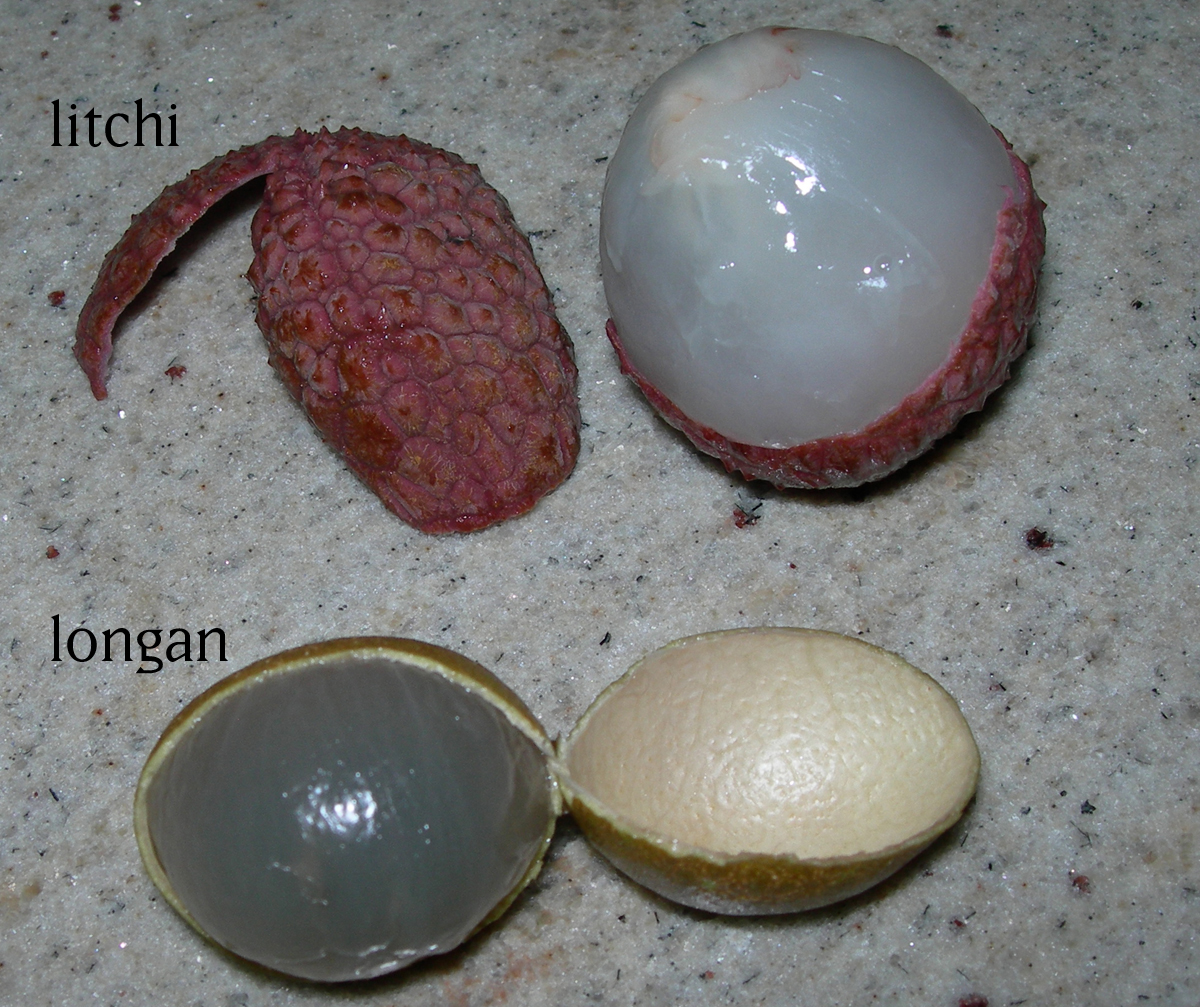 The litchi grows in several Chinese provinces besides the Guangdong Province. They can also be found, in Guangxi, Yunnan, Fujian, Hainan Island, and in Taiwan. No matter where, they develop extensive root systems, need lots of water, do better in warm weather, and love and need good light. In addition, litchi flowers need bees because they are the best pollinators of this fruit.
The litchi grows in several Chinese provinces besides the Guangdong Province. They can also be found, in Guangxi, Yunnan, Fujian, Hainan Island, and in Taiwan. No matter where, they develop extensive root systems, need lots of water, do better in warm weather, and love and need good light. In addition, litchi flowers need bees because they are the best pollinators of this fruit.
Chinese Traditional Medical (TCM) doctors have long recommended this fruit to reduce illness. They believe the litchi sweet and warm, and valuable for reducing nosebleeds and for lowering fevers. When in season, there are many who would welcome either condition as an excuse to over-indulge in this superlative food. TCM practitioners say the litchi boosts blood and rectifies qi, and there are even more reasons to enjoy this 'King of Fruits' be they fresh or any other way.
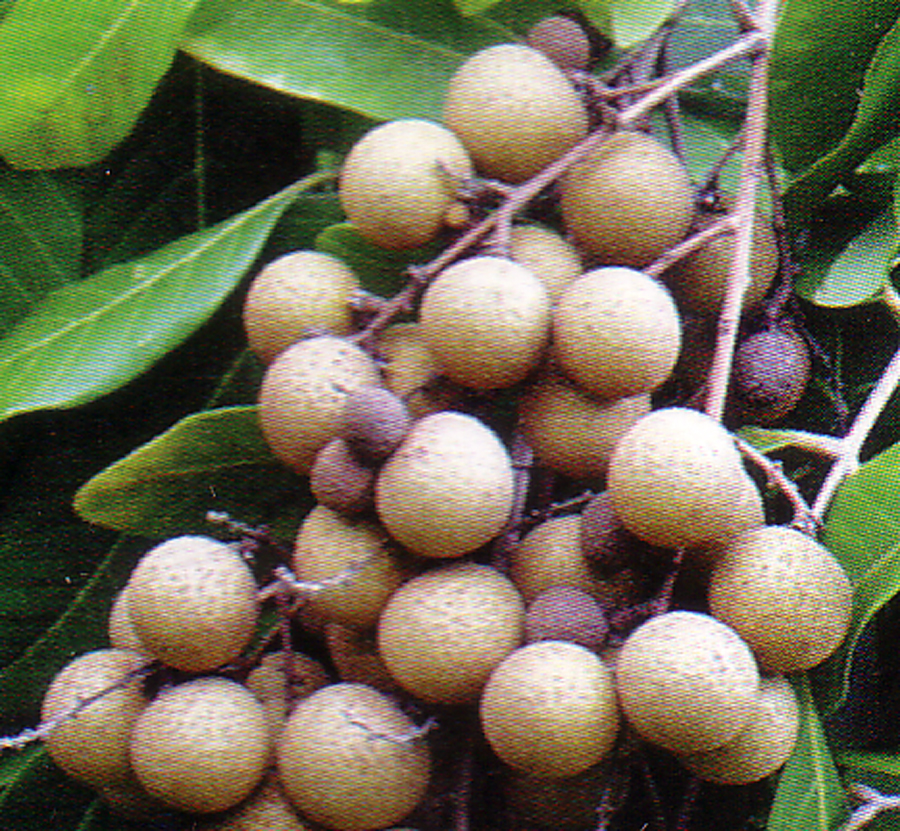
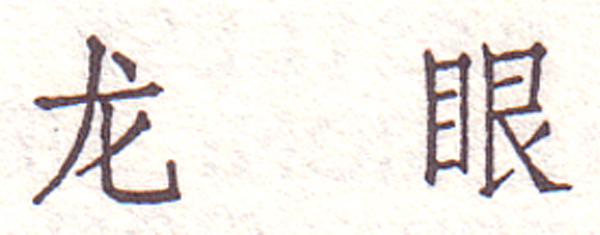 Longans: This fruit is also known as dragon eyes. Some say it is litchi-like; we do not agree. As can be seem in the picture of it, the exterior is brown and the fruit no where near as white as those of the litchi. The aroma and taste of longan is also totally different as is its water content. What is somewhat alike is that the longan, also known as a Langsat or Lansium domesticum, is flavorful; but in another way.
Longans: This fruit is also known as dragon eyes. Some say it is litchi-like; we do not agree. As can be seem in the picture of it, the exterior is brown and the fruit no where near as white as those of the litchi. The aroma and taste of longan is also totally different as is its water content. What is somewhat alike is that the longan, also known as a Langsat or Lansium domesticum, is flavorful; but in another way.
Longans are indigenous to southern China, India, and Sri Lanka; their trees make excellent windbreaks. Many rural families use them as such, and they adore them. Botanically, this fruit has three names, Dimocarpus longan, Euphoria longana, and Nephelium longan, and in Chinese it has only one, long yan. Related to the litchi, it is used in many of the same ways, though smaller, less juicy, and not as white. Some longan lovers report this fruit has a more delicate flavor, a more distinctive fragrance, and a sweet-sour taste; but all do not agre with them.
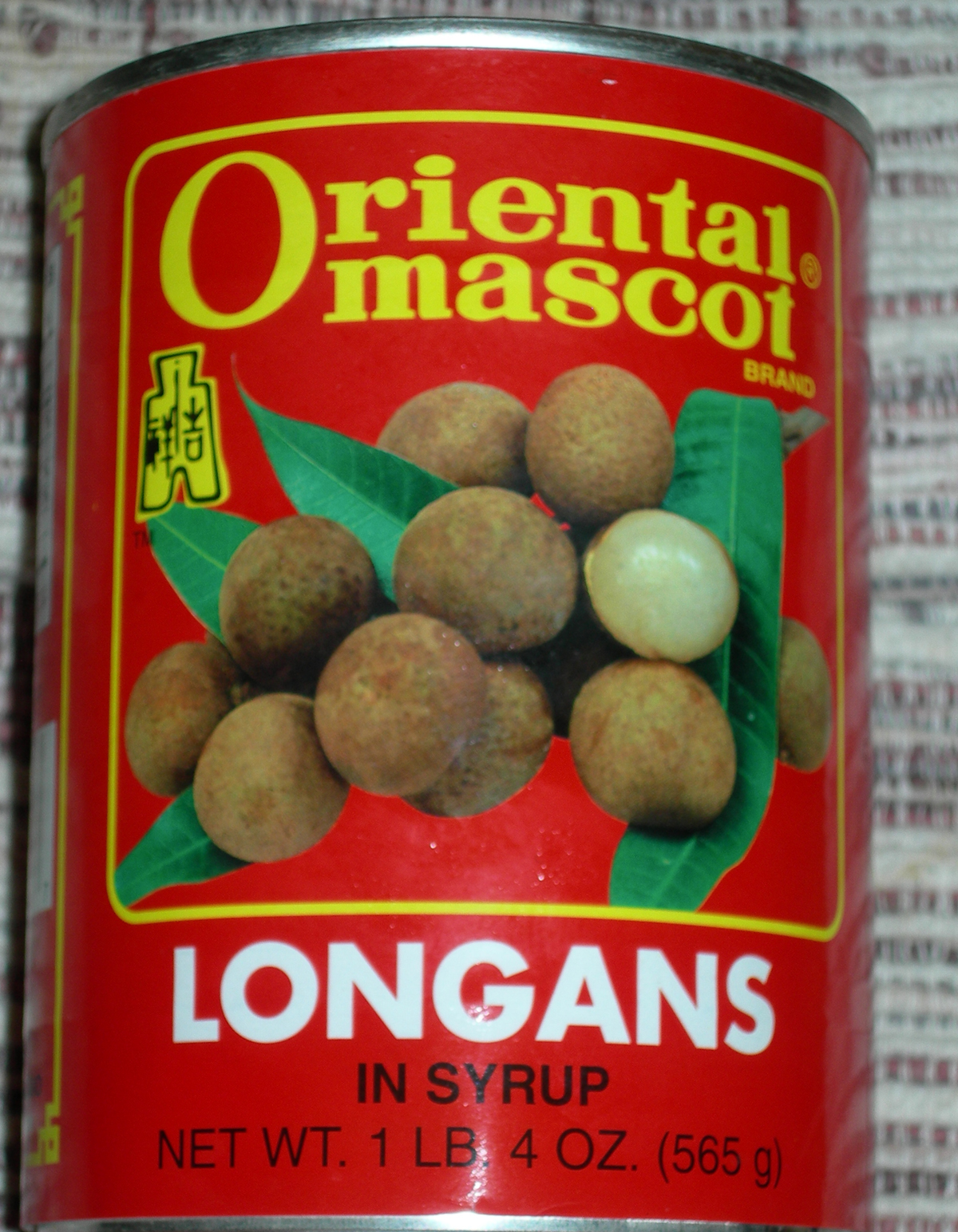 Like the litchi, longan trees can live and bear fruit for four hundred or so years. However, the best among them only bears for one hundred years or thereabouts. Some food historians report the longan was known in China for thousands of years. One such says longan trees were presented to Emperor Wen-ti who served from 220 to 226CE; and they advise he liked them for their shade, as an ornamental, and he liked their fruit. So taken with them was he, he ordered trees and fruit sent to him each year as a tribute; and they were.
Like the litchi, longan trees can live and bear fruit for four hundred or so years. However, the best among them only bears for one hundred years or thereabouts. Some food historians report the longan was known in China for thousands of years. One such says longan trees were presented to Emperor Wen-ti who served from 220 to 226CE; and they advise he liked them for their shade, as an ornamental, and he liked their fruit. So taken with them was he, he ordered trees and fruit sent to him each year as a tribute; and they were.
Longan fruit is found fresh, dried, canned, and in all the same forms as is the litchi and the loquat. The Chinese particularly like the longan dried and use it to make a tea-like beverage. TCM practitioners recommend this tea as medicine and they use the leaves, flowers and the juice medicinally. One recommendation they give is to take one or two fresh fruits or a tablespoon of the dried fruit with a teaspoon of freshly picked Chinese dates. These are to be steamed and eaten once a day and every day for those with heart palpitations.
For women with poor strength during pregnancy, the same amount of dried fruit should be mixed with a teaspoon of red dates, another of fresh ginger, and two tablespoons of brown sugar. These should be steamed and eaten once a day. Those who are anemic and others with gray hair need to take a tablespoon or two of longan wine, morning and evening. Chinese TCM practitioners tell those with ringworm and other scalp conditions that if they want relief form an itch, to grind longan pits, mix them with rice vinegar, and apply this topically. These same practitioners believe the longan and the litchi enter the body through liver, spleen and stomach channels. They say they moisten lungs, treat sore throats, and reduce a dry cough. They recommend ground longan fruit mixed with ground black pepper applied underarm to reduce body odor; and they believe eating fresh longan fruit relieves anxiety, consuming leaves from longan trees cools the system, and ingesting the flowers aids the kidneys. They also suggest making an appropriate mix with the roots to aid those with diabetes and gonorrhea.
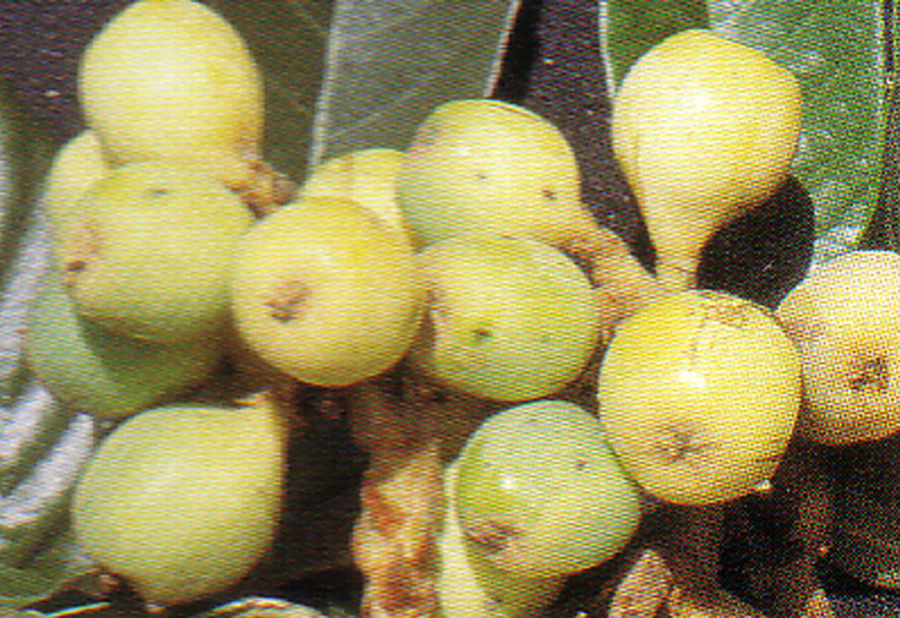
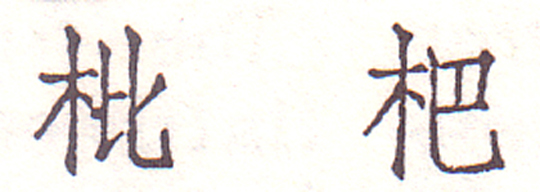 Loquats: Never mistaken for the litchi or the longan, the fruit of Eriobotiya japonica is larger than both of the above even though it comes from a smaller tree. The flesh of this fruit is usually apricot in color, has one to five shiny brown inedible seeds within, and is white or light, or a medium orange color. They are less well known and, therefore, less popular than either the litchi or the longan.
Loquats: Never mistaken for the litchi or the longan, the fruit of Eriobotiya japonica is larger than both of the above even though it comes from a smaller tree. The flesh of this fruit is usually apricot in color, has one to five shiny brown inedible seeds within, and is white or light, or a medium orange color. They are less well known and, therefore, less popular than either the litchi or the longan.
The Taiwan loquat, Eriobotiya deflex, grows on a tree larger than Eriobotiya japonica. It is native to western China and found in the mountains of both the Sichuan and Yunnan provinces. How it made these provincial leaps seems unknown. Also unclear, is why the more well-known japonica variety is mistakenly called ping po. This confuses those who, when seeing a white loquat, think litchi. The hollow center of the loquat should be a tip-off as should the fact that it is the largest of these three fruits.
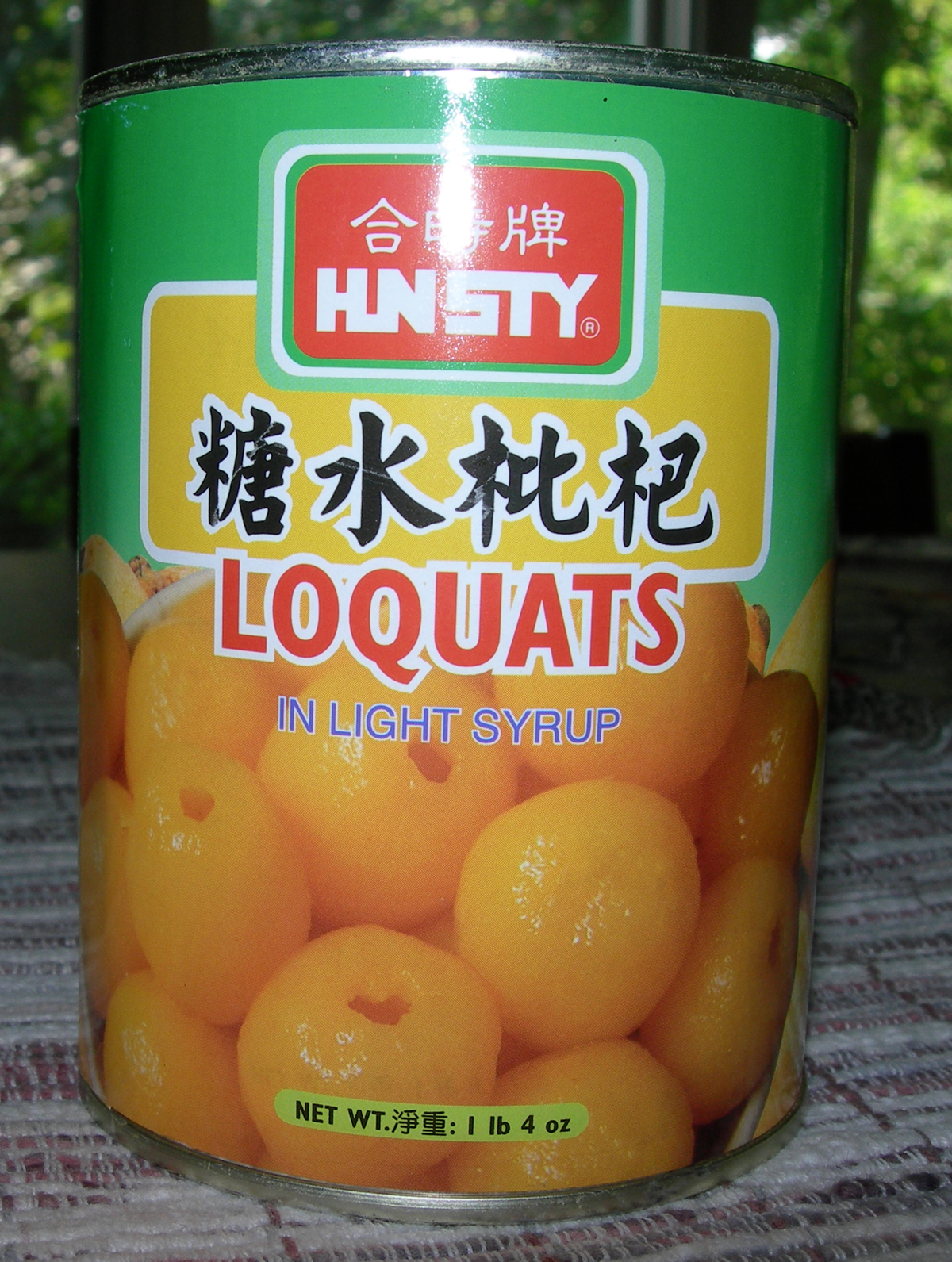 This fruit, also called 'Japanese medlar' is indigenous to China's southeastern area. It has been cultivated there since ancient times. It is refreshing, delicious, and slightly acidic, and also called pi pa in Chinese, some say because it resembles the Chinese string instrument of the same name. Loquats are available fresh, canned, made into liquor, jam, jelly, and candy.
This fruit, also called 'Japanese medlar' is indigenous to China's southeastern area. It has been cultivated there since ancient times. It is refreshing, delicious, and slightly acidic, and also called pi pa in Chinese, some say because it resembles the Chinese string instrument of the same name. Loquats are available fresh, canned, made into liquor, jam, jelly, and candy.
During the Yuan and Ming dynasties (1280 - 1386 CE, and 1386 - 1644 CE, respectively), the loquat was deemed a 'second category foodstuff' and packed on ice for transport to the royal family. They were used by the Emperor and other royals as 'Fourth Moon Seasonal Offerings.' The royals placed them on alters in their temples and near or in front of ancestral shrines in their homes.
Lower in calories than many other fruits including the litchi and the longan, the loquat is rich in iron, calcium, selenium, and potassium; and it is a good source of vitamin A as beta-carotene.
Popular in the Tang Dynasty steeped and fresh, this fruit is used green, but mostly for medicinal purposes. The process of 'steeping' is interesting. When green, the fruits are packed and stored in chilled water. Later, they are cooked with other foods. TCM practitioners recommend them for assorted purposes, and they suggest their leaves, flowers, fruit, and tree bark for various serious conditions.
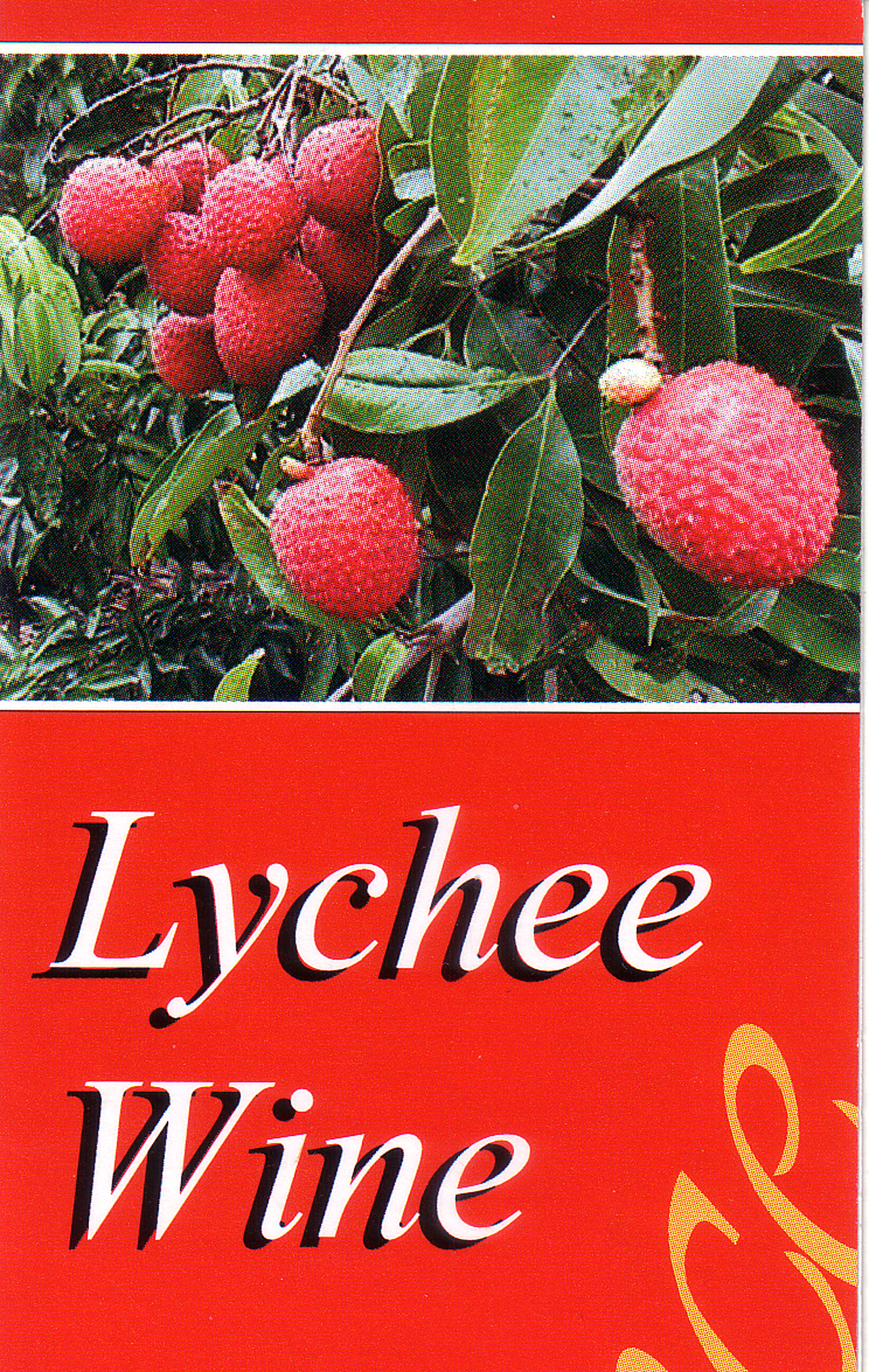
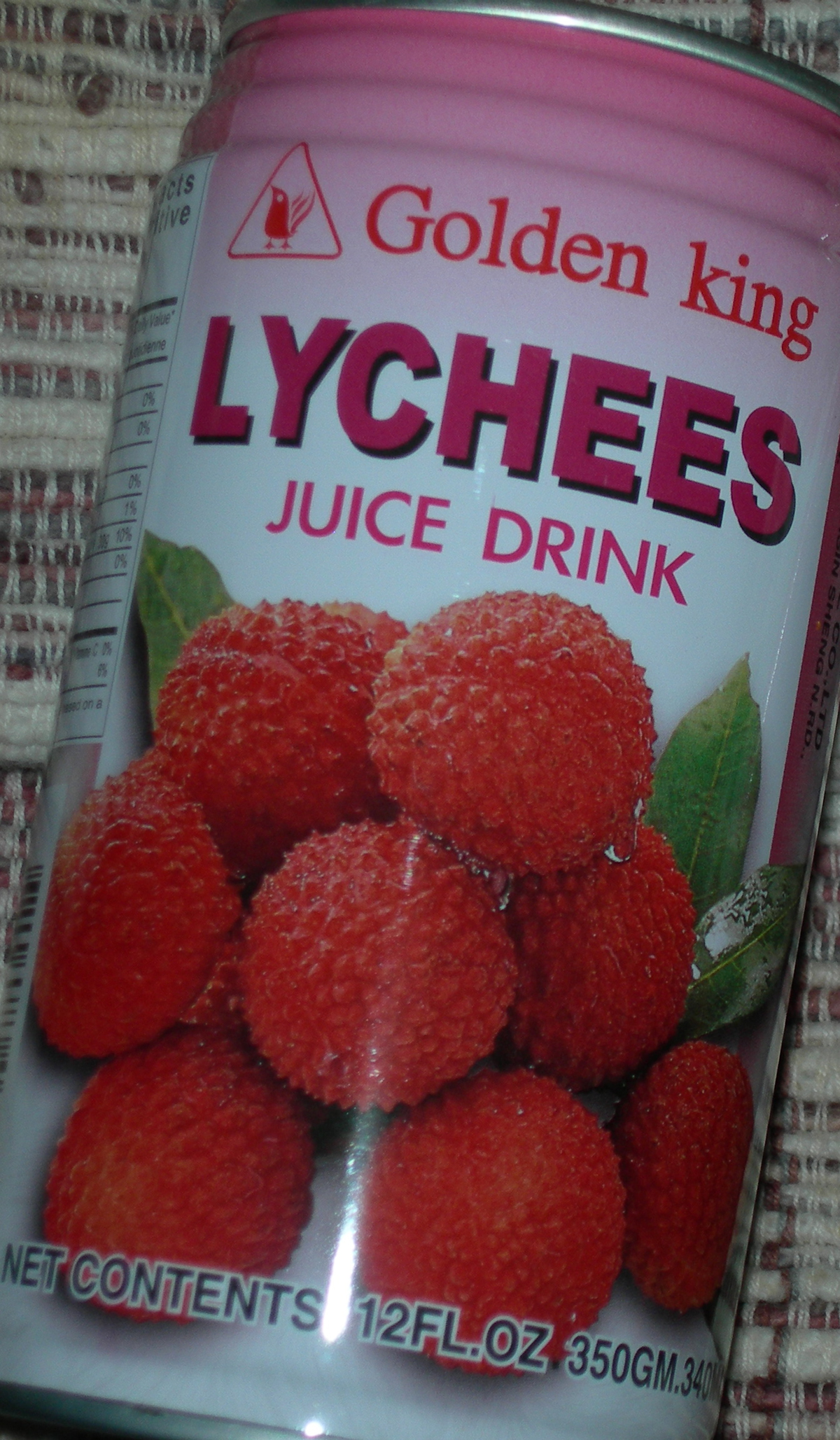 Similar to the litchi and the longan, loquats enters liver, spleen, and stomach channels, boost blood and rectify qi. Processed when green, loquats are popular to control vomiting and suppress coughs, and dried ones used to treat stomach aches. This fruit is recommended to relieve coughs, the flowers used to treat asthma and reduce breast pain, and the leaves used in cough syrups when mixed with honey. The latter soothes membranes in the throat.
Similar to the litchi and the longan, loquats enters liver, spleen, and stomach channels, boost blood and rectify qi. Processed when green, loquats are popular to control vomiting and suppress coughs, and dried ones used to treat stomach aches. This fruit is recommended to relieve coughs, the flowers used to treat asthma and reduce breast pain, and the leaves used in cough syrups when mixed with honey. The latter soothes membranes in the throat.
TCM practitioners recommend six tablespoons of fresh fruit and two of sugar steamed together with half cup of water to ease throat inflammation. This is to be taken morning and evening. For those excessively thirsty, they suggest eating one or two over-ripe fruits twice a day. To relieve a severe cough, they suggest one tablespoon of the crushed pits mixed with three slices of fresh ginger, and a quarter cup of water. This must be simmered and taken morning and evening for relief.
| Litchi Chicken |
|---|
2 teaspoons thin soy sauce 1 teaspoon Chinese rice wine 2 star anise 1 scallion, mince white part, sliver green part, kept separately 1 boneless whole chicken breast, cut into two-inch pieces 1 egg white 2 Tablespoons cornstarch mixed with same amount of cold water 2 cups vegetable oil 1 Tablespoon sugar 1 Tablespoon tomato paste or tomato catsup 2 Tablespoons Chinese rice vinegar 1 teaspoon dry sherry 20 fresh litchis 1/2 teaspoon Sichuan pepper, coarsely crushed Preparation: 1. Mix soy sauce, rice wine, star anise and white of the scallion with the chicken, egg white and the cornstarch water. Set aside for half an hour, stir well, and then drain and discard any excess liquid. 2. Heat oil in wok or deep fry pan and carefully put in the chicken pieces, a few at a time, as they can splatter. Deep fry them stirring constantly for two or three minutes. Then drain on paper towels. Strain and reserve the oil for another purpose, if desired. 3. Put sugar, tomato paste, rice vinegar, half cup of water, and the Sichuan pepper in a small pot. Mix well and bring to the boil. Cook for one minute before adding the chicken pieces and the litchi fruit. Mix everything together, and serve. |
| Fruit-flavored Mock Fish |
|---|
2 sheets (10 by 15 inches) of fresh bean curd 1 cooked sweet potato, skin discarded, then mashed 2 large Chinese black mushrooms, soaked, stems discarded, and minced 1/4 cup canned water chestnuts, minced 1 small red chili, seeds discarded, and minced 2 cups vegetable oil 1 Tablespoon thin soy sauce 2 slices fresh ginger, minced 1 scallion, minced 1 teaspoon cornstarch mixed with same amount of cold water 10 litchi or longan fruits Preparation: 1. Soak bean curd sheets in tepid water for five minutes. 2. Mix sweet potato, mushrooms, water chestnuts and chili pieces, and put on the drained bean curd sheets, shaping it like a fish, head to tail. Wrap bean curd sheets seam side down, and discard any excess. 3. Heat oil in a fry pan, and carefully slide mock fish into the oil and fry until crisp on one side, then carefully turn it over with two spatulas and fry the other side until crisp. Remove to two paper towels, and drain. 4. Put fried fish on a platter and slice it into pieces. 5. Put fruit in a small pot, add soy sauce, ginger, scallion, and the cornstarch water. Bring to the boil and as soon as the sauce clears, about half a minute, pour this over the mock fish, and serve. |
| Longan Beef Stew |
|---|
1 cup glutinous rice flour 3 tablespoons long-grain rice 1 tablespoon vegetable oil 1/4 pound minced beef 2 ounces fresh shrimp, peeled, veins removed, and minced 1 scallion, coarsely chopped 3 canned water chestnuts, coarsely minced 2 Tablespoons dark soy sauce 1/2 teaspoon salt 1 teaspoon sugar 1 teaspoon sesame oil 1/4 teaspoon coarsely ground black pepper 20 longan, fresh or canned 3 quail eggs, hard-cooked, peeled, then cut in half Preparation: 1. Put glutinous rice in a stainless steel bowl with one quart of water, stir, then let rest for one or two hours then add long-grain rice. Steam for forty minutes, then let rest for twenty minutes. 2. Heat a wok or fry pan, add oil, and fry beef for one minute, then add minces shrimp, scallion, water chestnuts, soy sauce, salt, sugar, sesame oil, and the pepper. Remove from the heat and stir well. 3. Divide the rice and any remaining water into six Chinese soup bowls. Put one-sixth of the meat mixture into the center of it, and drop three longan fruits around the outside of each bowl, pushing them into the meat-rice mixture. Make a depression in the center of the meat and put half an egg onto it. Push egg halfway into the meat mixture. 4. Carefully put each filled soup bowl onto a steamer rack and steam over boiling water for twenty-five minutes. Lift the bowls out and serve one to each person. |
| Shrimp-stuffed Fish |
|---|
12 whole canned longan or 20 litchi fruits 2 ounces shrimp, peeled, veins discarded, minced, their tails saved for decor 1/4 cup canned water chestnuts, minced 2 button mushrooms, minced 1 teaspoon cornstarch 1/8 teaspoon salt and ground white pepper combined 3 or 4 lettuce leaves, to hold the fruit upright in the steamer Preparation: 1. Check that there is no tiny pieces of pit in the fruit. 2. Mix shrimp, water chestnuts, and the mushrooms and mince a bit more until well combined. Then add cornstarch and salt and pepper, and carefully stuff a little bit into each fruit, being careful not to break it. Push tail piece into the end of the stuffing so that it extends and looks pretty. 3. Crumple lettuce leaves to that they hold the fruit upright in a steamer basket, their tails up. Cover the steamer basket and steam over boiling water for five minutes. Remove to a bowl, and serve. |
| Bean-paste Stuffed Loquats |
|---|
20 canned loquats, drained well 1/2 cup red bean paste 2 Tablespoons sugar 25 whole almonds, blanched their peels discarded, five of them coarsely chopped Preparation: 1. Stuff loquats with red bean paste and insert one whole almond down into each one of them. 2. Dip stuffed loquat end into the chopped almonds and put them in a steamer basket. 3. Steam covered over boiling water for eight minutes. Remove to a bowl, and serve. |
| Almond Bean Curd with Loquats |
|---|
1 envelope unflavored gelatin 1/2 cup whole evaporated milk 3 Tablespoons sugar 2 teaspoons almond extract 11 loquats, ten cut into quarters, one cut into rings Preparation: 1. Put gelatin and three tablespoons cold water in a small pot, stir, then heat at a very low temperature just until the gelatin dissolves, stirring all the time. 2. Add evaporated milk and two cups and two tablespoons of water, the sugar, and the almond extract. Mix well, then pour into a bread pan and allow to set. When almost completely set, mix in loquat quarters and let set completely. 3. With a soup spoon, remove small amounts at a time and put into a nice serving bowl. Put loquat ring on top of each portion, then serve. |

Copyright © 1994-2026 by ISACC, all rights reserved
Address
3 Jefferson Ferry Drive
S. Setauket NY 11720